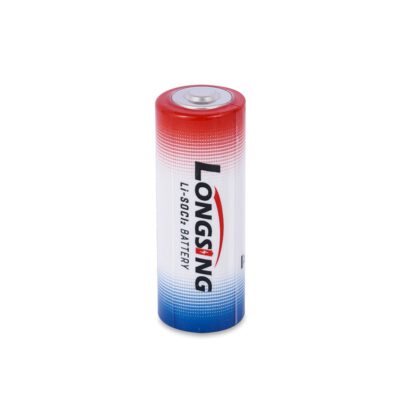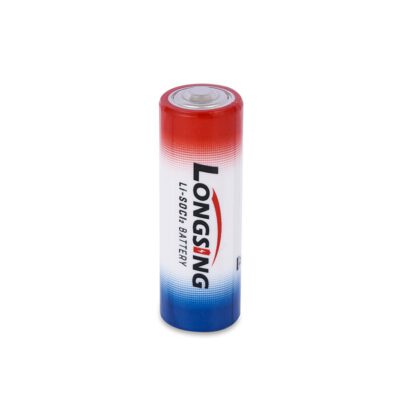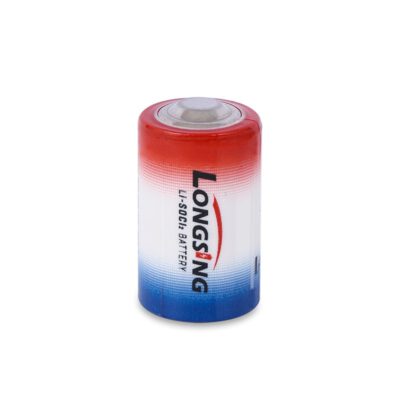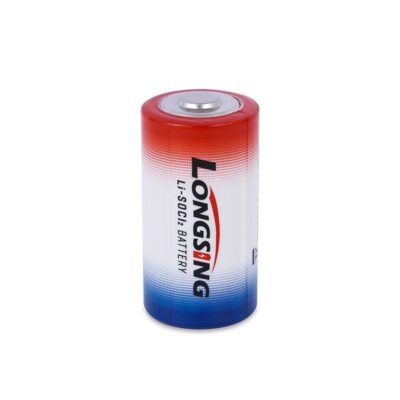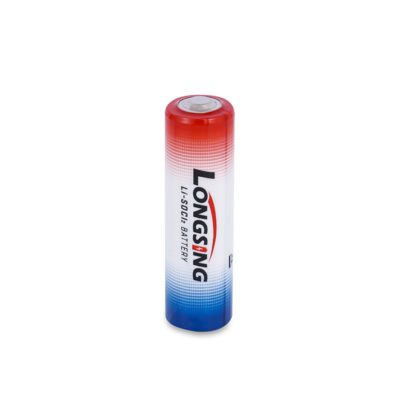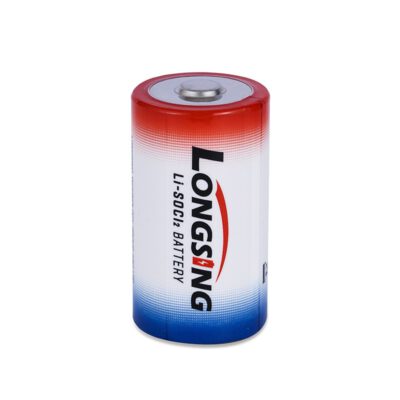Li-SOCI2 Battery
Showing all 6 results
Lithium Thionyl Chloride batteries are a favorite choice for IoT devices.
Long Sing lithium thionyl chloride battery offers a high operating voltage 3.6 volts, a high pulse capability, and the highest energy density among any primary batteries available. It can operate over a wide temperature range -40℃-85℃. These features make it to be a reliable and long-life solution for various applications like automatic meter reading, smart devices and industrial sensors.
Lithium thionyl chloride battery has very low self discharge rate of just 1% per year. They are extremely durable and can be safely stored for long periods of time. That is due to the passivation layer formed on the lithium surface.
What is passivation in lithium batteries?
When lithium thionyl chloride batteries are stored for a long time, the reaction between Li and SOCl2 will produce a dense passivation film on the surface of metallic lithium. The passivation film can prevent further reaction between Li and SOCl2. Therefore, when the battery is connected to a load for the first time after storage, voltage delay will occur. However, as the battery discharge proceeds, the passivation film will gradually be eliminated and the load voltage will gradually increase.
Advantages of passivation:
Because the reaction of Li and SOCl2 produces a dense passivation film that prevents the reaction from proceeding further, lithium thionyl chloride batteries can be stored for more than 10 years.
Disadvantages of passivation:
After long-term storage of lithium thionyl chloride batteries, battery passivation will reduce the high current pulse output capability, so that the instantaneous minimum voltage of the battery may be lower than the application cut-off voltage.

Instantaneous voltage curve (set 3.0V as cut-off voltage)
A Small current: no voltage delay;
B Medium current: The operating voltage is greater than the cut off voltage; the equipment application is not affected,
C Large current: The operating voltage instantly drops below the cut-off voltage, causing voltage delay. The performance is more prominent at low temperatures.
After storage for 3-6 months, lithium thionyl chloride batteries need to be activated by discharging specific depassivation current for each battery model. For example, for an ER14505 battery, a continuous load current of 20mA for 30 minutes is recommended. For an ER34615 battery, a continuous load current of 80mA for 30 minutes is recommended.
Battery passivation is inevitable, but its impact can be minimized to meet usage requirements. In order to eliminate the hysteresis effect of lithium thionyl chloride batteries, obtain large current pulse capabilities, and enhance low-temperature discharge capabilities, you can choose LONGSING ER+HPC battery capacitor combination.
Why lithium thionyl chloride battery connected in parallel with hybrid pulse capacitor will improve the storage life and capacity?
- ER26500 normal capacity is 8.5Ah, ER26500M normal capacity is 6.5Ah.
- HPC1520 self-discharge rate is 1 uA, when HPC1520 and ER26500 in parallel, ER26500 will provide 1 uA current to HPC1520, which makes ER26500 internally two electric polarization. This will reduce the protective shield, reducing the capacity consuming when the battery pack in storage at last.
- Due to HPC1520, the battery voltage will have no passivation when working after several years storage.
- From the above, ER26500+HPC1550 battery pack is equivalent to independent ER26500 and ER26500M with no battery passivation, improving the effective battery capacity after storage.
The internal resistance of the HPC is about 100 milliohms, and the internal resistance of the ER26500 is about 10 ohms. When the parallel system discharges to the outside, the one with low internal resistance will bear most of the discharge current.
At this time, the voltage of the HPC will drop quickly, and the voltage of the ER26500 will basically not change(Due to the open-circuit voltage recovery characteristics of the ER battery, even after the ER battery’s capacity is consumed to 80%, its voltage can still return to 3.65V, consistent with new battery.), ER26500 charge the HPC through the voltage difference(HPC will be charged to 3.65V, and its performance will always be the same.). The greater the voltage difference, the faster the charging speed.
At the same time, the discharge capability will not be weakened due to the reduction of lithium thionyl chloride battery capacity, and it can still maintain high current discharge and cycle until all the capacity of lithium thionyl chloride battery is released.


